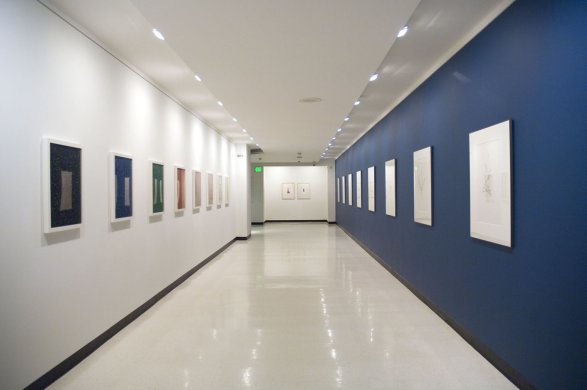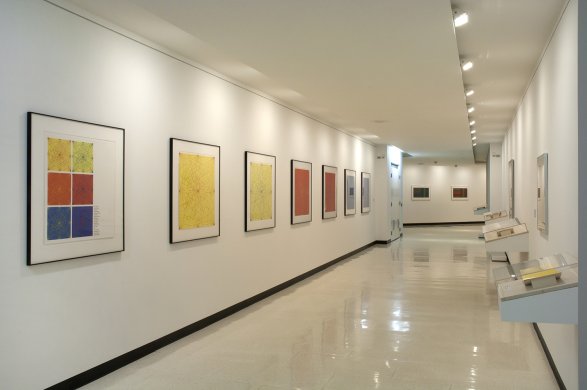REMIX: Color and Light
Friday, December 21, 2007–Sunday, May 4, 2008

Installation view of REMIX: Color and Light. Photograph by Tom Loonan.
1962 Building
Color is powerful, yet quixotic. As a result, it boasts a fascinating history that is constantly being rewritten to reflect the specific concerns and ideologies of the day. In large part the most insightful thoughts on color come from artists themselves. Not only are these ideas expressed in their art but also in their writings. There are libraries full of scientific handbooks on color, but few art historical writings on the subject exist. Artist David Batchelor wrote eloquently about this discrepancy in his book Chromophobia. He argues that because color is somehow difficult to know, there is fear that it will contaminate or corrupt. Color, therefore, is made out to be dangerous or trivial. It is either feminine and foreign or superficial and cosmetic. And either way, it is not taken seriously. Color, Batchelor says, is “other to the high values of western culture.”
So, when faced with a painting of one color, or what appears to be one color, no wonder most of us are confused. REMIX: Color and Light was conceived as an opportunity to muse on color and light. It highlighted the variety of ways we use and interpret color, from the personal and emotional to the intellectual and historical. Selected entirely from the museum's collection, it touched on most periods of art history over the last 150 years, providing context for the later development of monochrome painting. So while color is beguiling, its meaning elusive and shifting, its effects emotional as well as perceptual, color has a paramount place in the history of art. Color can also be a window into our personal histories, and as collector Giuseppe Panza di Biumo states, into “all the conditions of our inner mind.”
This exhibition is organized by Associate Curator of Contemporary Art Claire Schneider.


![Pools - Cocowalk [Miami]](/sites/default/files/styles/callout_fixed_height/public/artwork/2004_001_o2.jpg?itok=dTkhr5Gw)
